

Nobody Promised You Tomorrow: Art 50 Years After Stonewall, Friday, May 03, 2019 through Sunday, December 08, 2019 (Image: DIG_E_2019_Nobody_Promised_You_Tomorrow_01_PS11.jpg Brooklyn Museum. (Photo: Jonathan Dorado) photograph, 2019)
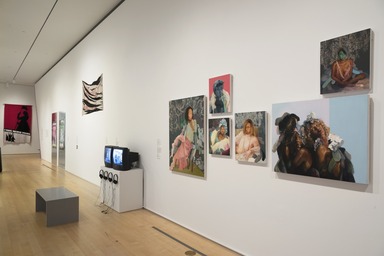
Nobody Promised You Tomorrow: Art 50 Years After Stonewall, Friday, May 03, 2019 through Sunday, December 08, 2019 (Image: DIG_E_2019_Nobody_Promised_You_Tomorrow_02_PS11.jpg Brooklyn Museum. (Photo: Jonathan Dorado) photograph, 2019)
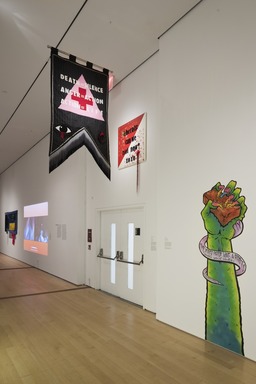
Nobody Promised You Tomorrow: Art 50 Years After Stonewall, Friday, May 03, 2019 through Sunday, December 08, 2019 (Image: DIG_E_2019_Nobody_Promised_You_Tomorrow_03_PS11.jpg Brooklyn Museum. (Photo: Jonathan Dorado) photograph, 2019)
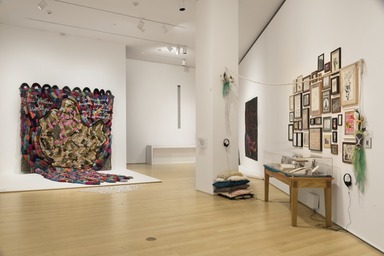
Nobody Promised You Tomorrow: Art 50 Years After Stonewall, Friday, May 03, 2019 through Sunday, December 08, 2019 (Image: DIG_E_2019_Nobody_Promised_You_Tomorrow_04_PS11.jpg Brooklyn Museum. (Photo: Jonathan Dorado) photograph, 2019)
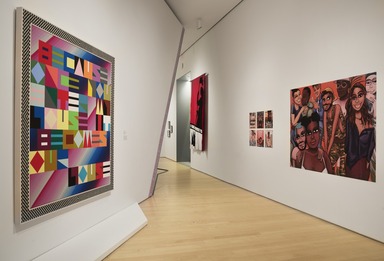
Nobody Promised You Tomorrow: Art 50 Years After Stonewall, Friday, May 03, 2019 through Sunday, December 08, 2019 (Image: DIG_E_2019_Nobody_Promised_You_Tomorrow_05_PS11.jpg Brooklyn Museum. (Photo: Jonathan Dorado) photograph, 2019)
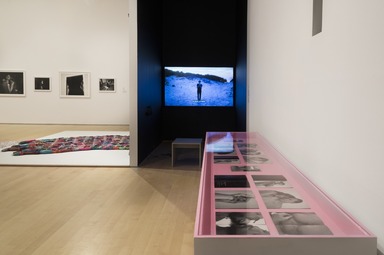
Nobody Promised You Tomorrow: Art 50 Years After Stonewall, Friday, May 03, 2019 through Sunday, December 08, 2019 (Image: DIG_E_2019_Nobody_Promised_You_Tomorrow_06_PS11.jpg Brooklyn Museum. (Photo: Jonathan Dorado) photograph, 2019)
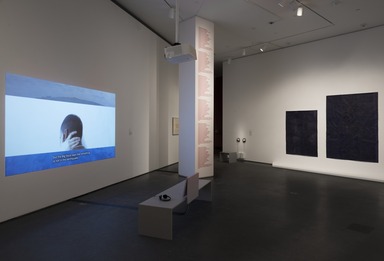
Nobody Promised You Tomorrow: Art 50 Years After Stonewall, Friday, May 03, 2019 through Sunday, December 08, 2019 (Image: DIG_E_2019_Nobody_Promised_You_Tomorrow_07_PS11.jpg Brooklyn Museum. (Photo: Jonathan Dorado) photograph, 2019)

Nobody Promised You Tomorrow: Art 50 Years After Stonewall, Friday, May 03, 2019 through Sunday, December 08, 2019 (Image: DIG_E_2019_Nobody_Promised_You_Tomorrow_08_PS11.jpg Brooklyn Museum. (Photo: Jonathan Dorado) photograph, 2019)

Nobody Promised You Tomorrow: Art 50 Years After Stonewall, Friday, May 03, 2019 through Sunday, December 08, 2019 (Image: DIG_E_2019_Nobody_Promised_You_Tomorrow_09_PS11.jpg Brooklyn Museum. (Photo: Jonathan Dorado) photograph, 2019)

Nobody Promised You Tomorrow: Art 50 Years After Stonewall, Friday, May 03, 2019 through Sunday, December 08, 2019 (Image: DIG_E_2019_Nobody_Promised_You_Tomorrow_10_PS11.jpg Brooklyn Museum. (Photo: Jonathan Dorado) photograph, 2019)
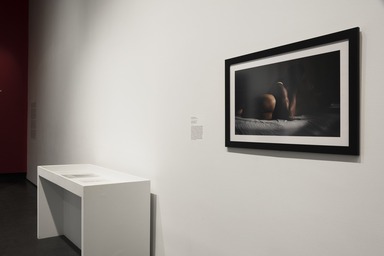
Nobody Promised You Tomorrow: Art 50 Years After Stonewall, Friday, May 03, 2019 through Sunday, December 08, 2019 (Image: DIG_E_2019_Nobody_Promised_You_Tomorrow_11_PS11.jpg Brooklyn Museum. (Photo: Jonathan Dorado) photograph, 2019)

Nobody Promised You Tomorrow: Art 50 Years After Stonewall, Friday, May 03, 2019 through Sunday, December 08, 2019 (Image: DIG_E_2019_Nobody_Promised_You_Tomorrow_12_PS11.jpg Brooklyn Museum. (Photo: Jonathan Dorado) photograph, 2019)

Nobody Promised You Tomorrow: Art 50 Years After Stonewall, Friday, May 03, 2019 through Sunday, December 08, 2019 (Image: DIG_E_2019_Nobody_Promised_You_Tomorrow_13_PS11.jpg Brooklyn Museum. (Photo: Jonathan Dorado) photograph, 2019)
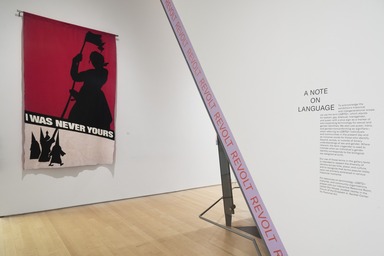
Nobody Promised You Tomorrow: Art 50 Years After Stonewall, Friday, May 03, 2019 through Sunday, December 08, 2019 (Image: DIG_E_2019_Nobody_Promised_You_Tomorrow_14_PS11.jpg Brooklyn Museum. (Photo: Jonathan Dorado) photograph, 2019)
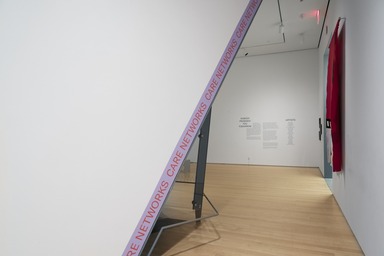
Nobody Promised You Tomorrow: Art 50 Years After Stonewall, Friday, May 03, 2019 through Sunday, December 08, 2019 (Image: DIG_E_2019_Nobody_Promised_You_Tomorrow_15_PS11.jpg Brooklyn Museum. (Photo: Jonathan Dorado) photograph, 2019)
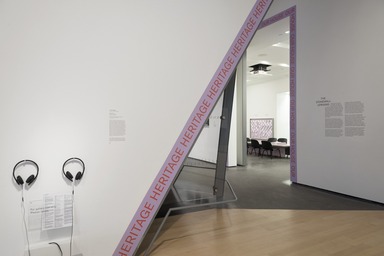
Nobody Promised You Tomorrow: Art 50 Years After Stonewall, Friday, May 03, 2019 through Sunday, December 08, 2019 (Image: DIG_E_2019_Nobody_Promised_You_Tomorrow_16_PS11.jpg Brooklyn Museum. (Photo: Jonathan Dorado) photograph, 2019)
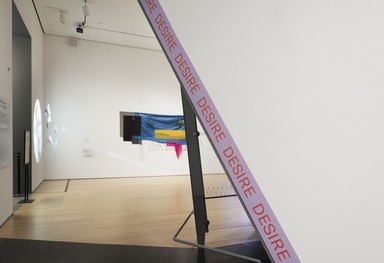
Nobody Promised You Tomorrow: Art 50 Years After Stonewall, Friday, May 03, 2019 through Sunday, December 08, 2019 (Image: DIG_E_2019_Nobody_Promised_You_Tomorrow_17_PS11.jpg Brooklyn Museum. (Photo: Jonathan Dorado) photograph, 2019)

Nobody Promised You Tomorrow: Art 50 Years After Stonewall, Friday, May 03, 2019 through Sunday, December 08, 2019 (Image: DIG_E_2019_Nobody_Promised_You_Tomorrow_18_PS11.jpg Brooklyn Museum. (Photo: Jonathan Dorado) photograph, 2019)

Nobody Promised You Tomorrow: Art 50 Years After Stonewall, Friday, May 03, 2019 through Sunday, December 08, 2019 (Image: DIG_E_2019_Nobody_Promised_You_Tomorrow_19_PS11.jpg Brooklyn Museum. (Photo: Jonathan Dorado) photograph, 2019)

Nobody Promised You Tomorrow: Art 50 Years After Stonewall, Friday, May 03, 2019 through Sunday, December 08, 2019 (Image: DIG_E_2019_Nobody_Promised_You_Tomorrow_20_PS11.jpg Brooklyn Museum. (Photo: Jonathan Dorado) photograph, 2019)
Nobody Promised You Tomorrow: Art 50 Years After Stonewall
-
Nobody Promised You Tomorrow
Nobody Promised You Tomorrrow: Art 50 Years After Stonewall presents a constellation of twenty-eight LGBTQ+ artists born after the 1969 Stonewall Uprising and working, five decades later, in New York, the hometown of the revolt. Commemorating the fiftieth anniversary of the six-day rebellion—ignited y a routine police raid on the Stonewall Inn, a gay bar in Greenwich Village—the exhibition explores the profound legacy of the Uprising within art and visual culture today. At once looking to history and facing the future, the artists on view pay tribute to activist foreparents while asking how we will care for tomorrow's generations.
Drawing its title from the rallying words of Black trans artist and activist Marsha P. Johnson, the exhibition underscores both the precariousness and the vitality of LGBTQ+ communities through the interconnected themes of revolt, heritage, desire, and care. A leader in the Stonewall Uprising, Johnson remains a touchstone for many of the artists whose work engages radical antecedents of LGBTQ+ organizing. Honoring figures who have been excluded from mainstream storytelling, these artists challenge us to recount history from the perspectives of those surviving at its margins.
In this spirit, Nobody Promised You Tomorrow aims to expand our collective imagination of the Stonewall Uprising, beyond protestors in the street, to consider the everyday acts of care between friends and lovers that sustain communities and public activism. White supremacy and persistent state violence, gender-based oppression, and the increasing pressures of gentrification form the social and political backdrop of this exhibition. The artists presented here grapple with these conditions to question how moments in history become contested monuments. -
Artists
Mark Aguhar
Felipe Baeza
Morgan Bassichis
Anna Betbeze
David Antonio Cruz
TM Davy
Amaryllis DeJesus Moleski
John Edmonds
Mohammed Fayaz
Camilo Godoy
Jeffrey Gibson
Hugo Gyrl
Juliana Huxtable
Rindon Johnson
DonChristian Jones
Papi Juice
Elektra KB
Linda LaBeija
Park McArthur
Michi Ilona Osato
Una Aya Osato
Elle Pérez
LJ Roberts
Tuesday Smillie
Tourmaline
Kiyan Williams
Sasha Wortzel
Constantina Zavitsanos -
A Note on Language
To acknowledge the exhibition's historical and intergenerational scope, we use the term LGBTQ+, which stands for lesbian, gay, bisexual, transgender, and queer, with a plus sine as a marker of ever-expanding terminology for sexual and gender identities. We also use queer, trans, and gender nonconforming as signifiers when referring to LGBTQ+ individuals and communities in the present day and as inclusive words for those who identify beyond, across, or outside of binary understandings of sex and gender. Where relevant, the term cisgender is used to indicate when an individual's gender identity corresponds to the biological sex assigned at birth.
Our use of these terms in the gallery texts is intended to respect the diversity of identity across time, place, and culture, and to recognize that terms popular today were not similarly embraced in various historical moments.
For resources on terminology, LGBTQ+ histories, and community organizations, please visit our interactive Resource Room, called Our House, located nearby in the Forum of the Elizabeth A. Sackler Center for Feminist Art. -
The Stonewall Uprising
In 1969, police raids were an expected, near-weekly occurrence at the Stonewall Inn. At the time, there was not a single U.S. law protecting LGBTQ+ workplace or housing rights, and sodomy laws, policing of clothing and self-presentation, and vague charges of "indecency" could upend lives seemingly at any moment. As a result, LGBTQ+ nightlife was an illegal enterprise and members of the Mafia ran spaces like the Stonewall Inn, where bar patrons from diverse backgrounds intermingled.
In the early hours of Saturday, June 2, 1969, a routine raid by the New York Police Department on the Stonewall Inn escalated into an uprising against police brutality and widespread oppression. Ignited and sustained by trans and gender-nonconforming people—primarily of color—the protest extended into six days of conflicts and demonstrations in the nearby streets of Greenwich Village.
The initial clash that started the Stonewall Uprising is a contested history, only partially recorded in divergent eyewitness acounts. After police entered the bar, the crowd outside began to jeer and chant, and officers barricaded themselves inside the bar after protestors threw stones and bottles.
As Mafia members, bar employees, and gender-nonconforming patrons were removed to police vans, a collective resistance formed. Witnesses remember people such as Stormé DeLarverie, Jackie Hormona, Miss Major, Marsha P. Johnson, and Zazu Nova shouting incitements to the crowd. When the Tactical Patrol Force arrived, the crowd became impossible to control in the Village's winding streets.
By dawn, the protestors had dispersed, only to reconvene later in the day for a demonstration of public displays of affection amid chanting. Throughout the following nights, intermittent bursts of action flared, escalating again on Wednesday after insulting coverage in the local press. The Uprising's visibility marked a turning point in many LGBTQ+ communities, who began to advocate for their rights with greater militancy.
For some, the Stonewall Uprising heralded the birth of the Gay Rights movement in the United States. Others see the progress of these mainstream efforts as favoring assimilationist goals of marriage equality and military-service inclusion, neglecting the Uprising's radical roots in opposition to police violence. -
Revolt
The mainstream Gay Rights movement that developed in the wake of the Stonewall Uprising, and from similar acts of resistance in the 1960s, achieved marked gains for LGBTQ+ civil rights. Nevertheless, many of the foundational concerns that motivated Stonewall participants to revolt in the summer of 1969 remain unresolved. The realities of aggressive gentrification, police violence, and mass incarceration continue to disproportionately affect LGBTQ+ communities, especially people of color and trans and gender-nonconforming people.
The works in this section are anti-assimilationist in approach, and many draw direct connections between today and the resistance, violence, and vandalism that played out at Stonewall in 1969. Looking to history, Tourmaline and Sasha Wortzel imagine how Marsha P. Johnson spent the hours before the revolt, while Tuesday Smillie traces connections between the activism of the 1970s Street Transvestite Action Revolutionaries (STAR) organization and the ongoing queer and trans activism of recent year. Elektra KB transforms banners she uses in protests and marches into artworks that riff on activist legacies, and Juliana Huxtable remixes the vitriol of online political commentary to reveal mainstream feminism's external and internal contradictions. Hugo Gyrl's wheatpasted screenprint makes direct reference to the bricks taken up by protesters at the Stonewall Uprising. -
Heritage
The artists featured here honor activist forebears, community members, and friends, from the distant past to recent history. The individuals and collectives from the early years of the queer liberation movement demonstrated a vanguard insistence on being visible and being heard, despite material scarcity and marginalization by society or their families. Often because of their radical politics or expressions of identity, these figures have been minimized in forms of archiving such as mainstream films, newspapers, and books. Some artworks in this section grapple with erasure, while others memorialize foreparents who laid the foundations for contemporary organizing. All forge an expansive, intergenerational lineage of queer and trans culture. -
Desire
From the intimate to the utopian, the artist in this section explore desire—both for one another, and for alternative worlds beyond oppression and binary oppositions. For LGBTQ+ people, who are marginalized by heterosexist society and criminalized by the state for the ways in which they love, the stakes of wanting each other are high. Works of art in this section reckon with the attendant fear and danger associated with queer forms of relationship and envision futures wherein such desire, in all its resplendent unruliness, is cherished.
The exhilaration of knowing and holding another person can be felt in John Edmonds's bedroom self-portrait, in which a moment of quietude seems to open a world within a couple, and in the traces of rest, play, and intimacy marking the memory foam of Constantina Zavitsanos's sculpture. Desire becomes a silvery mode of navigating memory and communicating longing in Rindon Johnsons's sensuous video overlaid with a twenty-minute poem addressed to his lover. In work by Amaryllis DeJesus Moleski and Tuesday Smillie, desire mobilizes imagination and compels us to dream. Looking toward tomorrow, these artists offer glimpses into other ways of being and remind us that, in the words of theorist José Esteban Muñoz, "queerness is always in the horizon."
-
Care Networks
In their most expansive sense, acts of care involve affection and support, both material and immaterial, for each other. This section considers the networks and communities of care developed among friends, lovers, organizers, and collaborators, and variously expressed by friendship, intimacy companionship, and chosen kinship. For LGBTQ+ communities, caring for one another can be a radical act in the face of oppression, violence, and discrimination. Strategies for mutual support have long been organized by and for LGBTQ+ people. Everyday acts of care also underpin public-facing activism and help to make resistance and direct action sustainable.
The exuberance and intimacy of caring for one another within a community—whether at a bar, on a beach, in a commune, or as a collective—pervades the works shown in this section. Nightlife has often been a space where LGBTQ+ people can gather to socialize, cruise, and find community. The vibrant possibilities of going out to get together at bars and parties are depicted in Mohammed Fayez's illustrations for Papi Juice parties, and in Elle Pérez's photographs. Inspired by gay and lesbian communes of the 1960s, Lavender Hill Historical Society addresses the desire for collective living, while LJ Roberts's textile work maps recent constellations of queer and trans collective houses, activist groups, and friendship across Brooklyn. Park McArthur and Constantina Zavitsanos bring attention to the labor required by acts of care and focus on networks created to support people with disabilities.
-
Our House
You are welcome to engage with the selected materials and with each other in Our House, a reading room and resource center.
Building on the interconnected networks of heritage and care in Nobody Promised You Tomorrow, Our House presents a selection of texts and media about, around, and beyond the Stonewall Uprising. On the occasion of the Uprising's fiftieth anniversary, and honoring the radical activism that occurred prior to and after the revolt, this interactive archive and community space is intended to inspire visitors and offer continued learning for those who are new to LGBTQ+ history as well as those who are deeply involved with queer and trans art, life, and culture. From poetry collections to information on community groups actively organizing today, the selected resources gathered here illustrate narratives of the continued resistance of LGBTQ+ comunities against state-sanctioned police violence, white supremacy, and heteropatriarchy, offering inspiration for community care for future generations.
Certain texts were recommended by artists included in the exhibition, by educators and curators on staff, and by community partners. Brief reviews of selected texts have been written by members of InterseXtions: Gender & Sexuality, the Museum's annual paid LGBTQ+ teen internship in community programming and queer art history.
-
February 25, 2019
The exhibition features twenty-eight contemporary LGBTQ+ artists whose work honors the fight for queer liberation in the years since the 1969 Stonewall Uprising.
On view May 3–December 8, 2019
The Brooklyn Museum presents the exhibition Nobody Promised You Tomorrow: Art 50 Years After Stonewall, which commemorates the 1969 Stonewall Uprising in New York City by exploring the rebellion’s profound legacy and lasting impact on the queer artistic community of today. The exhibition features twenty-eight LGBTQ+ artists currently or recently active in New York, whose work spans painting, sculpture, film, photography, and performance. It takes its title from the rallying words of transgender artist and activist Marsha P. Johnson, aiming to expand the collective understanding of the Stonewall Uprising’s legacy for today’s LGBTQ+ communities. The summer 1969 revolt at The Stonewall Inn, a gay bar in New York City’s West Village, was a landmark moment in the queer liberation and gay rights movement in the United States. However, in the ensuing decades the crucial role of transgender women of color and homeless LGBTQ+ youth in the Uprising, as well as the radical politics the rebellion embodied, have been largely marginalized by the mainstream gay rights movement. The exhibition sheds light on alternative narratives, including those of individual participants, while also exploring the realities of our current political moment through the work of artists from the vanguard of contemporary art.
Nobody Promised You Tomorrow: Art 50 Years After Stonewall is organized by an interdepartmental group of five curators, each of whom brings a unique perspective to the curatorial process. The exhibition will touch all corners of the Brooklyn Museum, with work on view in the Elizabeth A. Sackler Center for Feminist Art, a related Resource Room for further learning, expanded public and educational programming, and new institutional initiatives. This multidimensional approach to curation emphasizes the Brooklyn Museum’s dedication to inspiring conversations through art and providing community members with a place to have those conversations.
“The Brooklyn Museum has long been committed to providing a platform for those courageous enough to confront and question history,” says Anne Pasternak, Shelby White and Leon Levy Director, Brooklyn Museum. “With Nobody Promised You Tomorrow, we’re telling a more inclusive story of the Stonewall Uprising that connects it directly to the remarkably diverse community of LGBTQ+ artists carrying on the legacy of Stonewall now and into the future.”
The exhibition features artists Mark Aguhar, Felipe Baeza, Morgan Bassichis, Anna Betbeze, David Antonio Cruz, TM Davy, Amaryllis DeJesus Moleski, John Edmonds, Mohammed Fayaz, Camilo Godoy, Jeffrey Gibson, Hugo Gyrl, Juliana Huxtable, Rindon Johnson, DonChristian Jones, Papi Juice, Elektra KB, Linda LaBeija, Park McArthur, Michi Ilona Osato, Una Aya Osato, Elle Pérez, LJ Roberts, Tuesday Smillie, Tourmaline, Kiyan Williams, Sasha Wortzel, and Constantina Zavitsanos. Their work will be displayed across four sections that explore themes of Revolt, Heritage, Desire, and Care Networks. These themes expand upon the prevailing understanding of the Stonewall Uprising and its legacy.
“In the Revolt section, drawings and films trace the lives and honor the actions of those who organized for change before and after Stonewall, while contemporary protest signs transform into artworks that uplift and riff on activist legacies. Figures like Marsha P. Johnson, Sylvia Rivera, Stormé DeLarverie, and Marlon Riggs are commemorated in the Heritage section, which also focuses on how gentrification and violence continue to affect queer communities today,” the group of five exhibition curators explains. “The artworks in Desire explore attraction and intimacy, while moving into a space of imagining and organizing toward more equitable futures and new ways of living. In Care Networks, artists visualize their networks of affinity, support, friendship, and nightlife that provide emotional sustenance as well as spaces for experimentation and liberation.”
Artists included in the exhibition have worked individually and in collaboration to grapple with the unique conditions and questions of the current political moment. The Brooklyn Museum has commissioned new works specifically for the exhibition. They include Tourmaline’s new film Salacia, which depicts Mary Jones, a Black transgender woman who lived in New York City during the early nineteenth century, as she carves out a life for herself—and a legacy for generations thereafter—in the face of systemic racism and transphobia. Salacia is cocommissioned with High Line Art, presented by Friends of the High Line and the New York City Department of Parks and Recreation. LJ Roberts’s Stormé at Stonewall is a large-scale sculpture that pays tribute to the diverse participants in the Stonewall Uprising—particularly lesbian activist Stormé DeLarverie—whose stories are often erased by popular media. Morgan Bassichis has created an interactive installation inspired by the radical communal living practices of Lavender Hill, a commune founded outside of Ithaca, New York, in the late 1960s. Numerous performances have also been commissioned as part of the robust schedule of public programs in conjunction with the exhibition.
Nobody Promised You Tomorrow: Art 50 Years After Stonewall is curated by Margo Cohen Ristorucci, Public Programs Coordinator; Lindsay C. Harris, Teen Programs Manager; Carmen Hermo, Associate Curator, Elizabeth A. Sackler Center for Feminist Art; Allie Rickard, Curatorial Assistant, Elizabeth A. Sackler Center for Feminist Art; and Lauren Argentina Zelaya, Acting Director, Public Programs, Brooklyn Museum. Its Resource Room is organized by Levi Narine, Teen Programs Assistant, InterseXtions and Special Projects, in collaboration with the curators.
Generous support for this exhibition is provided by The Kaleta A. Doolin Foundation.
Additional support is provided by Paul R. Beirne, the Helene Zucker Seeman Memorial Exhibition Fund, Sally Susman and Robin Canter, and MaryRoss Taylor.
The Keith Haring Foundation and Blanchette Hooker Rockefeller Fund Provided generous support for related Education programming.
Press Area of Website
View Original


